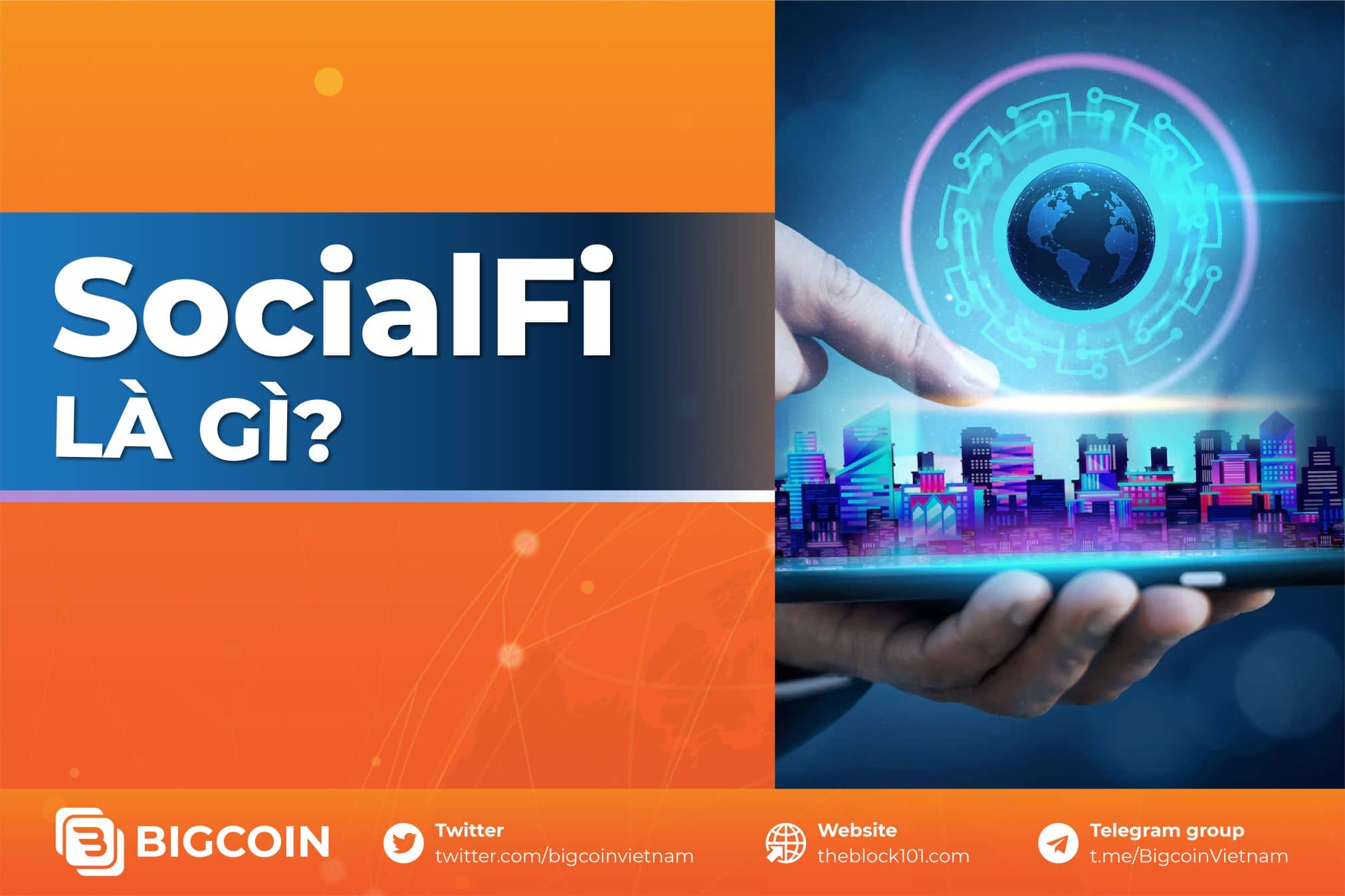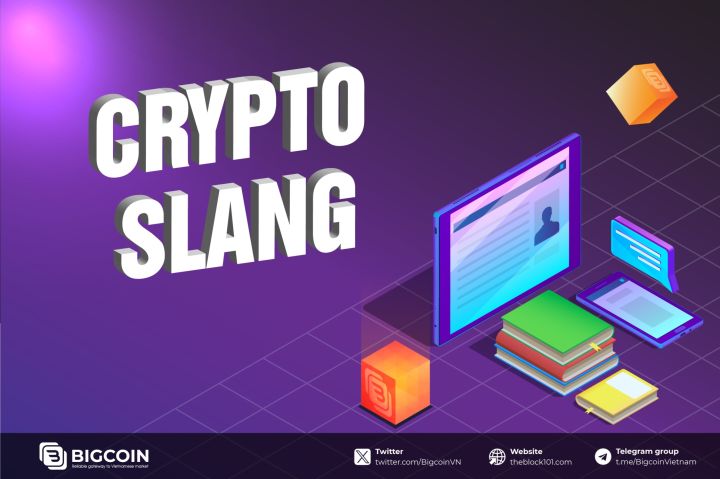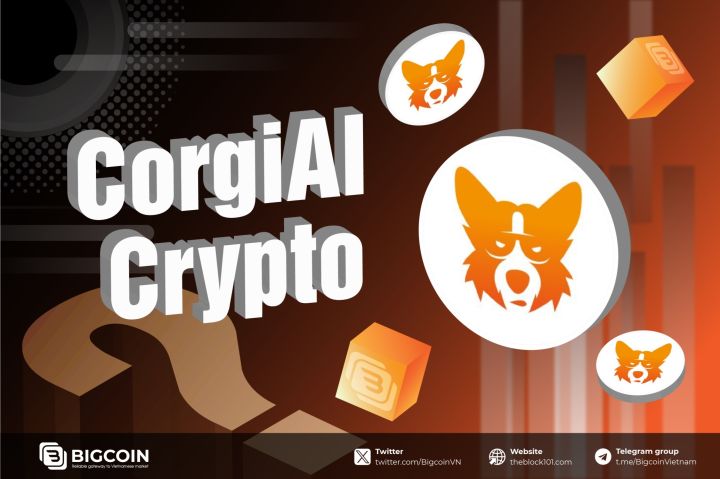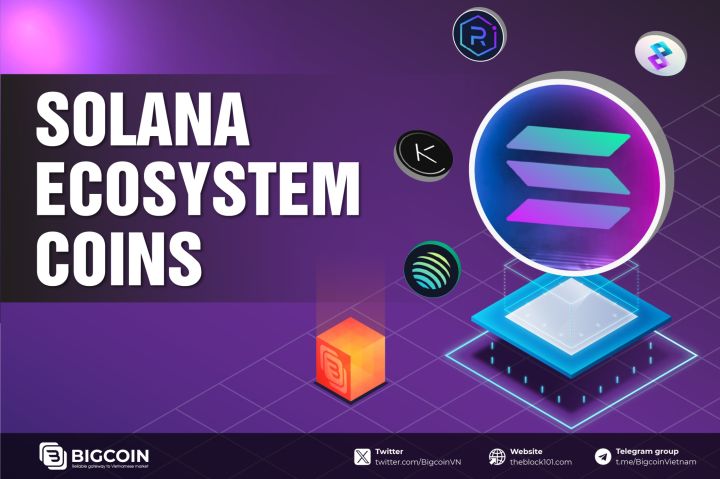
1. Overview of SocialFi
1.1. What is SocialFi?
SocialFi is a new ecosystem that combines activities on social media platforms (Social) with decentralized finance (DeFi).
So, what is the focus of SocialFi? It is the content creators, influencers, and users who participate in social networks. They are ensured better control over their data, freedom of speech, and the ability to monetize through social media interactions.
SocialFi uses NFTs (non-fungible tokens) to manage identity and ownership of users' digital assets. SocialFi platforms are organized as decentralized autonomous organizations (DAOs) to maintain decentralization and ensure fairness for all participants on the platform.
The significant advancements in blockchain technology enable SocialFi infrastructure to meet the throughput demands for social media interactions. Consequently, SocialFi projects are becoming increasingly popular in the crypto market in particular and are gradually influencing the traditional market in general.
1.2. What are the desired problems that SocialFi aims to solve?
Once we understand what SocialFi is, it's time to explore the reasons behind its emergence.
In general, SocialFi has arisen to address the issues of Web 2.
Every day, more than half of the world's population (about 58.4%) spends an average of 2 hours and 27 minutes on social media. However, current social networks (referred to as Web 2) are facing several issues such as:
-
User data is leaked and exploited by intermediary organizations for profit.
- Freedom: Users on social media platforms are not entirely free; content creators are often restricted from discussing certain topics. Although regulations on Web2 social platforms are said to protect users from harmful posts, they inadvertently violate the decentralization that Web3 aims for.
- Ability to prove ownership of digital assets: This is especially crucial for creators and artists sharing their work online. Copyright infringement without sufficient control measures has become common on current Web2 platforms.
- Ability to monetize brand assets: Most influencers have created their own brands and can only indirectly profit from their brand assets. Instead, they have no direct way to profit from their brand and its supporters.
1.3. What is the operational mechanism of SocialFi?
In essence, SocialFi can be understood as decentralized social applications incorporating some characteristics of Web3.
-
Web3 is the third generation of the internet aimed at addressing the limitations of Web2 and closely relates to SocialFi.
-
Web3 aims to create websites and applications that run on a blockchain network, a decentralized network with multiple peer-to-peer nodes or a combination of both to establish an economic protocol integrated with cryptocurrency.
So, what is the operating mechanism of SocialFi? The operating mechanism of SocialFi can be considered as follows:
- There is no control over any social media platform to guarantee the privacy and security of users.
- Creating a network connection that controls users' privacy and safety while allowing users to have full control over the content they post.
- Enabling users to earn income from their content, as well as allowing them to earn income from decentralized activities such as social interactions, NFT mining, and gaming.
- Advertising revenue on SocialFi is distributed fairly, meaning content creators can earn additional income through advertising using the SocialFi network.

Cơ chế hoạt động của SocialFi là gì?
1.4. The components involved in SocialFi
SocialFi comprises three main components: social media platforms, DeFi projects, and users. SocialFi influences its participants in the following ways:
-
Social Media Platforms: SocialFi enhances user interactions on social media platforms such as content creation, data management, platform development, etc. Additionally, it creates new revenue streams for social media platforms by integrating DeFi functionalities.
-
DeFi Projects: SocialFi enables DeFi projects to increase user engagement by integrating them into social media platforms.
-
Users: Users can access and utilize a variety of DeFi services and social media functionalities on the same platform. Moreover, users benefit significantly from SocialFi with increased revenue opportunities, protected personal data, and an expanded creative space.
2. Why is SocialFi such a highly promising direction?
Play-to-Own, a new concept originating from GameFi, is now being applied to SocialFi: Social (reading, singing, writing, etc.)-to-Earn. So, what are the reasons we should pay attention to SocialFi?
There are two main reasons to focus on SocialFi:
- Social networks (SocialFi) have always been the most critical part of the industry's development, represented in the form of DID - a series of application products developed based on identity verification. As more and more projects begin to be introduced to the market as platforms or multifunctional collections, their demand for various functions is gradually increasing. Compared to independent redevelopment, the choice of mature DID tools in the market to access and participate in project activities as a component is increasingly valued by many developer groups.
- SocialFi is a hub for traffic aggregation: After several years of development, the crypto market is gradually withdrawing from the advantages of the deep blue ocean. Additionally, the Matthew effect has become increasingly evident over the past two years. Exchanges or other projects are seeking increasing growth in the market. Costs are increasing exponentially.
On the contrary, the SocialFi project, acting as a gathering hub for natural traffic, has already solved the challenge of traffic aggregation. The only remaining task for Web3 enterprises in the near future is conversion. This is also what blockchain-adaptive platforms need to consider: giving governance authority to platform users, particularly influential business users (associations), and attracting these users to participate in the market requires first aggregating retail users.
With Musk's acquisition of Twitter and a significant shift towards Web3, it's no surprise that we'll see a major exchange, launchpad, and NFT marketplace built around Twitter's massive user base in the future. Musk's actions will likely serve as a model for other companies in the industry. Looking ahead, there will undoubtedly be more integration between SocialFi or Web2+Web3.
In summary, the potential of SocialFi in the crypto industry is undeniable.
3. The challenges of SocialFi
3.1. The scalability of infrastructure
Blockchain still faces limitations in data processing, especially as data volumes grow. DeSo, a blockchain developed for building SocialFi applications, claims superior scalability compared to most existing layer 1 blockchains due to its specialized design for SocialFi use cases. DeSo can handle 80 posts per second for 4 million users, whereas Twitter can only process 6,000 posts per second for 300 million users.
However, Facebook generates 4 petabytes of data daily, with 510,000 comments posted every minute, 293,000 status updates, 4 million likes, and 136,000 photos uploaded. Whether blockchain can effectively handle such massive data volumes remains a crucial question to address in the near future.
3.2. A sustainable economic development model
Perhaps the biggest challenge facing DeFi and other derivative business models is establishing a sustainable economic model. Previously, the GameFi trend emerged and attracted many participants but quickly collapsed when it couldn't balance the token's economic model.
SocialFi promises significant benefits for participants, but it is currently only being implemented on a small scale. As this model becomes a trend with more participants, the challenge of ensuring equitable benefits among all parties for sustainable growth becomes increasingly difficult.
3.3. Legal Framework Limitations
Despite being considered one of the most advanced technology trends today, SocialFi still faces numerous regulatory barriers. In many countries, regulations regarding cryptocurrency and decentralized finance remain unclear and are often viewed as sensitive issues. This ambiguity can pose significant challenges for SocialFi projects seeking to operate and grow, potentially resulting in legal risks and regulations for users.
Stringent regulatory requirements may restrict the operations of SocialFi platforms, making it more difficult to create and distribute tokens. Furthermore, these regulations can also introduce legal risks for users, especially when they engage in buying or selling tokens and conducting transactions on SocialFi platforms. This can increase concerns and difficulties for newcomers to adopt this technology.
4. Top 7 prominent SocialFi projects in 2023
The visually identity-visualized metaverse social network has won three awards from ENS, IPFS, and Covalent at this year's Global Hackathon, secured sponsorship from Uniswap on September 21st, and officially announced they have received support and sponsorship from the renowned organization, Lens Protocol blockchain project. It can be said that this is a Web3 project with tremendous potential.
4.1. Lifeform

Lifeform is a decentralized digital identity solution provider that has received seed round investment from Binance Labs. The project operates within the visual DID protocol category, similar to Ready Player Me and Genies.
Lifeform focuses on developing integrated visual DID solutions. Its core products include digital identity editing capabilities such as makeup, clothing changes, 3D accessories, a visual DID protocol with secure smart contracts, decentralized identity recognition SaaS services, and fundamental tools for developing cross-Web3 applications within the metaverse.
Recently, Lifeform launched the Public Mint campaign priced at 1 BUSD. As of now, Lifeform AVATAR has over 30,000 owners, and its official website has received 1.4 million visits.
There is a growing realization that the best way to introduce Web3 is through direct engagement via social media channels, and as a key member in Binance's social strategy, Lifeform may gain significant weight within the Binance ecosystem in the future.
Building on the support for Live-to-Earn, Lifeform is developing related features to earn rewards through live streaming.
Currently, Lifeform has confirmed plans to release its token, with a total supply of 1 billion. Its LFT token will facilitate daily ecosystem consumption and Live-to-Earn rewards.
4.2. Lens Protocol

Lens is a fundamental decentralized social media protocol, open-source, and interoperable (referred to as Social Graph), built on Polygon. It includes common social media functionalities such as profile editing, commenting, message reposting, and more. What sets Lens Protocol apart is its integration with NFTs, allowing users to own and control all the content they create.
Currently, the Lens ecosystem is highly active, with many developers choosing to build their own ecosystem applications based on Lens. Examples include the Web3 blog Lenster and the Share-to-Earn platform Phaver, among others.
4.3. CyberConnect

CyberConnect is a decentralized Social Graph protocol providing Web3.0 and Metaverse social networking services.
As of now, CyberConnect has completed two funding rounds totaling $25 million, with investments from Multicoin Capital, Animoca, and Sky9.
CyberConnect describes data standards, storage infrastructure, rights management mechanisms, and identity as the foundation for a seamless and secure digital social experience in Web3. CyberConnect also proposes a structured social data network comprising indexed data and proposals accessible and contributable globally without constraints.

5. Criteria for evaluating a SocialFi project
5.1. Ideas - Products
Before delving into the project, the most fundamental factor users need to understand is what the project's idea and product are by answering the following questions:
- What is the project about and is there a product already?
- Is the idea feasible and aligned with market needs?
- What is the main product of the project and at what stage of development is it? (Has there been a prototype or has the product been tested in a stress test environment?)
- What real value does the project bring to users and the entire niche?
After evaluating the overall concept and product of the project and comparing it with some similar projects, we will have a general overview of the project's alignment with the market and community.
For example, two leading SocialFi projects in terms of user numbers are Hooked with nearly 3 million users and CyberConnect with over 1 million users. Both projects have already launched products and focus heavily on delivering value to users through activities such as quizzes or interactive tasks directly engaging with the project for rewards. These products are relatively easy to access and highly attractive to users.
5.2. Development team and backers
Development team
Furthermore, the development team is also a crucial factor determining the success of a project. The team's vision and past experiences serve as clear indicators when evaluating their capability to successfully develop the project.
If the project is developed by a team with established achievements and specific relationships within the market, this is considered strong evidence that their leadership can lead the project to success.
Here are some questions users should consider when researching the project's development team:
- Who are the project's founders?
- Have they achieved any successes in Web3 or similar niches in the traditional market?
- Does the team include anyone who has participated in developing major social platforms in the traditional market such as Facebook, Twitter, TikTok, YouTube, etc.?
- Are they influential figures with strong relationships in this market?
Backers
Investors, partners, or advisors of the project will be among the first believers in the project.
Therefore, if these individuals are "big names" or influential figures in the market, it implies that the project is led by knowledgeable and experienced individuals.
Additionally, it's important to consider the investor team to assess whether they can demonstrate the financial strength that the project needs for sustainable development. Major investors also serve as the first gateway to evaluating the project's legitimacy.
Hence, evaluating the backers of the project, understanding and categorizing their preferences and ways of supporting the project, can provide some peace of mind when placing trust in the project.
Some notable funds in the market that people can follow include: Binance Labs, Paradigm, a16z, Multicoin Capital, Sequoia, Polychain, Dragonfly, Ascensive Assets, Delphi, Pantera,….

Some large funds in the market
5.3. The project's business model
This could be considered one of the most crucial factors in assessing the project's development potential. Currently, SocialFi is still in a relatively nascent stage, with not many large successful projects to serve as examples or establish a standardized development model.
While most current projects are still in the phase of attracting and growing their user base, based on some previous niches, we can still focus on analyzing a few key questions to envision a suitable direction for the project:
- The barriers to entry
During the initial user acquisition phase, if there are too many barriers to entry, it will be challenging to attract mainstream users. Therefore, designing the project with familiar and user-friendly features will be an advantage for attracting early adopters to the platform.
- The ability to take profit for users
In any model, benefits and profits are crucial factors for attracting users. Especially when finance is one of the two core aspects of SocialFi, creating parallel benefits for users will significantly impact community attention.
- Is it sustainable and scalable?
We have witnessed many successful models that eventually failed when faced with a large user base, leading to serious gaps in control and meeting their needs.
Therefore, creating tightly integrated business models that are highly sustainable and scalable can be quite challenging in the early stages of a project. We can evaluate and compare with previous prominent models to grasp the relative feasibility of the project's model.
5.4. Community and users
Community and users are the most concrete evidence after passing through the aforementioned filters. The user base of the project is generally divided into two main groups: influential individuals and individual users.
If the project is utilized and supported by influential figures in the market, this will be one of the first levers for marketing and expanding the project's reach to a larger user base.
Additionally, we have various tools and platforms to track active users and community engagement with the project, such as DappRadar, Coingecko, CoinMarketCap, and official project channels like Twitter, Discord, Telegram, etc. By monitoring these tools, we can gauge not only the community's interaction with the project but also the activity level of the development team with the project.

6.Frequently asked questions on the topic "What is SocialFi"
6.1. What is SocialFi?
Social Finance, often abbreviated as "SocialFi," is a concept that combines two main elements: Web3 social networks and decentralized finance (DeFi).
6.2. What was SocialFi born to do?
SocialFi is developed to address the issues of Web 2.0
7. Conclusion
SocialFi is a promising trend in today's cryptocurrency market. Despite facing challenges related to infrastructure and economic models, SocialFi platforms have demonstrated their potential to transform the operation of social networks and economic models. The cryptocurrency market is rapidly moving towards new economic models, and SocialFi could represent a significant step forward in this process.
If SocialFi projects receive strong support and investment, and regulatory frameworks are clearly defined, their development potential becomes limitless. The integration of DeFi principles with features from social networks can create robust and stable foundations for SocialFi platforms in the future.
This concludes all the information about SocialFi. Hopefully, after reading this article, you now have a clear answer to the question "What is SocialFi?"
Read more:

 English
English Tiếng Việt
Tiếng Việt





